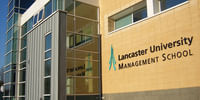In Interaction DesignÊwe teach the fundamentals of code in an accessible manner alongside visual thinking and creative problem-_solving. When combined these aptitudes gives students access to a fully_ featured and essential digital toolset. Skills and confidence are developed through supported exercises, which form the building blocks of knowledge and techniques, which students can quickly apply to the creative problems set in project briefs. Current projects include the process of digitisation, data visualisation, 3D form generation, contemporary narrative structures, interaction design, procedural drawing and motion graphics. The projects change year on year to reflect the fast _pace of innovation in digital culture.
The ability to mix code and procedural thinking, with aesthetic consideration and critical awareness, allows students to create interactive virtual and physical artefacts, and gives graduates access to the exciting and innovative world of digital art and design.
The discipline is fast _paced and prone to constant flux so it is imperative that digital artists and designers keep up with current advances. They require a passion for technology and innovation, along with forward_ thinking imagination and the capacity to develop great ideas. The content of the programme is kept current and topical through strong links with industry and digital arts practioners. During the four years of study students participate in critical discussions and inquiry _led learning to explore historical and contemporary theories associated with digital culture and consider their impact on interconnected global society. There are ever growing opportunities for sustainable creative careers relating to the creative digital industries.Ê









